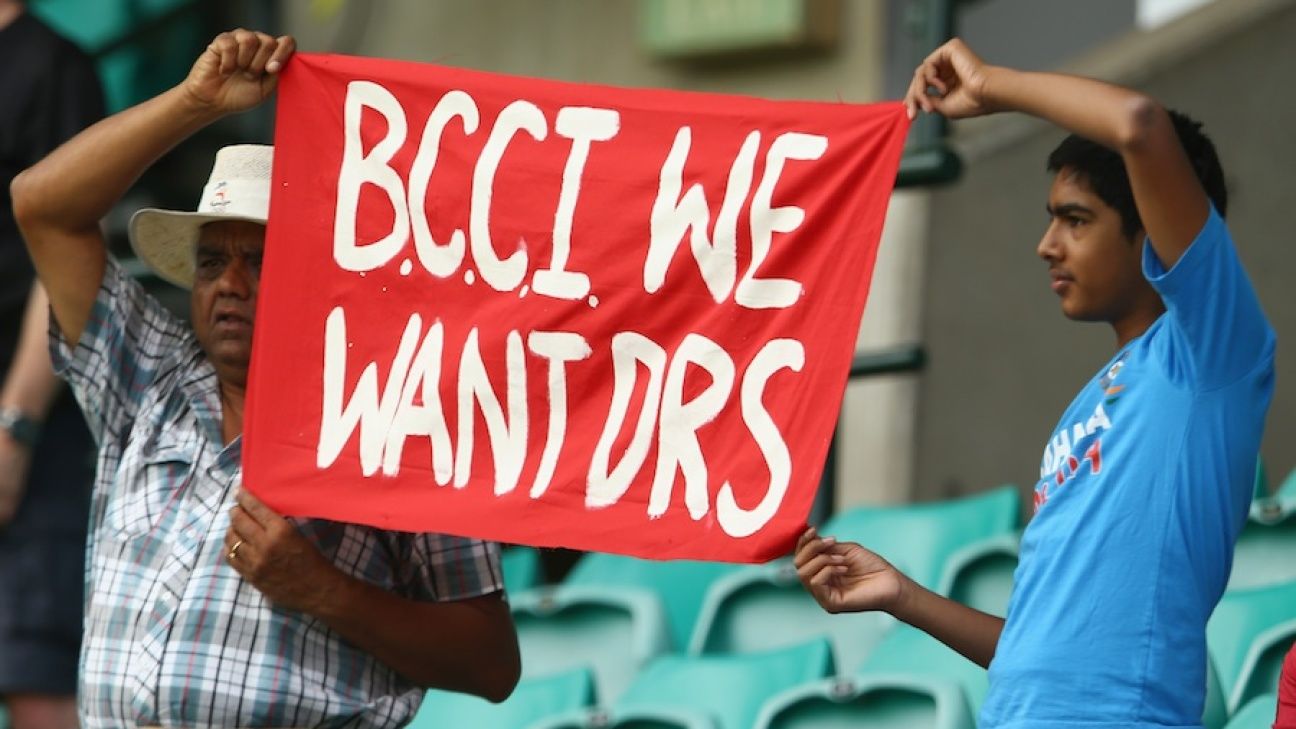
The Ranji Trophy will feature the Decision Review System (DRS), although in a "limited" capacity, for the first time in the upcoming semi-finals and finals rounds of the tournament, which begins from Saturday. It is understood that each team will have four reviews per innings, and the tools that will be used are a virtual pitch map for lbw decisions and slow-motion cameras. This limited DRS system will not feature tools like HawkEye, Snickometer, or UltraEdge.
Only a handful of matches are televised during a long domestic first-class season, and the lack of broadcast facilities in several venues makes it near impossible to implement technology for all teams. BCCI's GM for cricket operations, Saba Karim, told ESPNcricinfo that the board wanted to offer uniformity for all teams and that was only possible starting from this stage of the tournament. The final will also have the same limited system.
"We wanted to bring in uniformity so we can offer the same to all the teams, and that we could accomplish only for the semi-finals.
"For the finals also we'll have the limited DRS. But we're not introducing any new technology for this. There's no HawkEye, no Snicko, nothing of that sort. So whatever is available to us, we will implement that. Basically we're trying to facilitate the umpires to try and come up with better decisions," Karim said.
The umpiring standards in Indian domestic cricket have often come under scrutiny, and reached a particularly high crescendo last year when the semi-final between Karnataka and Saurashtra was televised and featured several contentious decisions. People from both teams had welcomed the use of technology after that game, as many have before them. Karim said the BCCI's decision to bring in technology came from an intent to provide tools in a high-profile match, but did not come about specifically based on that game.
"Such high-profile matches, we want to offer as much tools as possible to the umpires so that they can come up with correct decisions. We are at times influenced by whatever has conspired in the past, but to say that we have brought in only because of that would not be appropriate," he said.
Both teams from that fixture feature in the semi-finals this year, although they will not play each other. Bengal host Karnataka in Kolkata and Saurashtra will be hosting Gujarat. In a press release earlier this week, Saurashtra Cricket Association president Jaydev Shah said he welcomed the implementation of technology for one of the "most important tournament for seniors" and that high profile games like semi-finals and finals, at least, should feature assistive technology. Bengal captain Abhimanyu Easwaran was also welcoming of it.
"I think it's a very good thing to have DRS in domestic cricket as well, especially in knockout games, and semi-finals and finals. Even though there's not that much technology," Easwaran said. "The umpires can make errors at times. A human can make an error, but to rectify it, you have technology and that will probably change the game for a team and that can probably be a deciding thing at a crucial point of the game. So I think it's really good to have it, and hopefully it can help players get crucial runs or crucial wickets and change the game for their teams."
Easwaran, like most of his team-mates and a lot of others in the domestic circuit, has never played in a match that has featured the DRS. The Karnataka camp will have KL Rahul and Manish Pandey, at the very least, who will be familiar with the system through their time in international cricket. But Easwaran is confident that the lack of experience won't be too much of a barrier to overcome.
"It's a new thing, but I think guys have seen enough cricket on television, so we know a bit of how it works," he said. "In the pre-match meeting with the umpires and the referee, there is going to be an explanation about how it works and what are the technologies available and things like that. So we'll have a fair idea of it the day before the game. And obviously we'll talk about it to our teams as well, so they have a fair idea of how it's working. We've been also given papers to read how it works, and the guys have seen on TV, how to take a review, and things like that."















 Phone: (800) 737. 6040
Phone: (800) 737. 6040 Fax: (800) 825 5558
Fax: (800) 825 5558 Website:
Website:  Email:
Email: 






